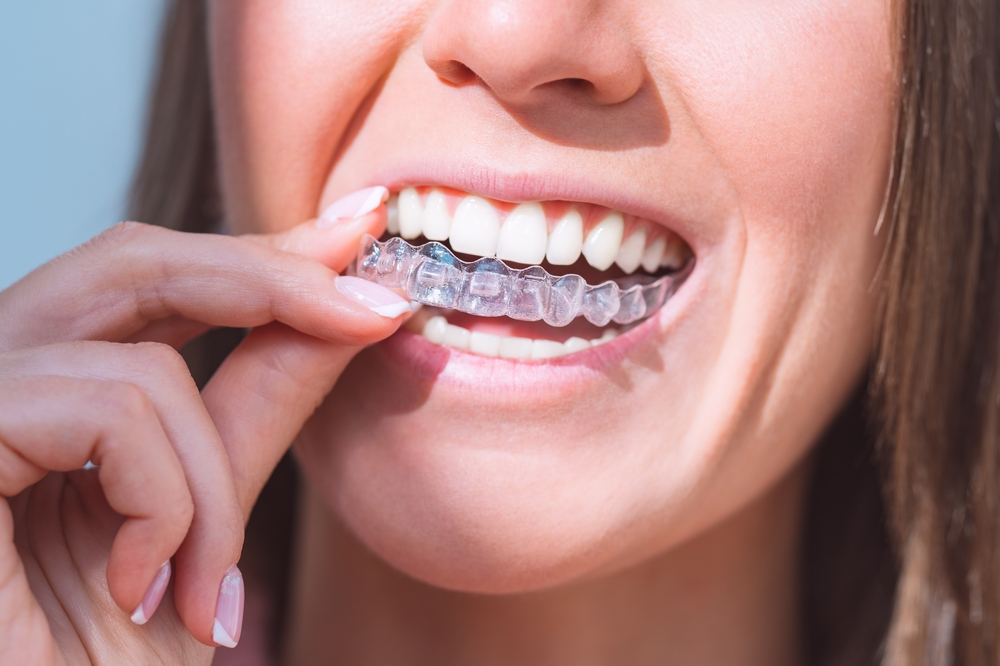Clear aligners have become increasingly popular because of their esthetics and comfort. This treatment seems to offer several advantages in terms of maintaining oral hygiene. Due to lots of studies clear aligners were better for periodontal health than fixed appliances and might be recommended for patients at high risk of developing gingivitis.
Periodontal diseases are a summary of inflammatory conditions that affect the periodontium and negatively impact our oral health. Orthodontic appliances, such as traditional brackets and wires can create numerous plaque retention sites, increasing the patients’ risk of developing periodontal disease and dental caries.
Like any other treatment modalities, orthodontic treatment, in addition to its benefits, has also associated risks and complications. Periodontal health is an important factor that may be used to evaluate the success of orthodontic therapy. Periodontal complications are reported to be one of the most common side effects linked to orthodontics
Orthodontic brackets and elastics might interfere with effective removal of dental plaque, thereby increasing the risk of gingivitis. Few clinical studies also reported poor periodontal health and greater loss of clinical attachment level distally in the dental arches. This could be a result of poor oral hygiene in molar regions and the presence of molar bands, which favors food lodgment.
Fixed orthodontic appliances create retention areas for plaque accumulation and hinders the attempts of oral hygiene, increasing risk for enamel demineralization, caries, gingival inflammation, and decreased periodontal health (Gorelick et al., 1982 and Derks et al., 2007). Between three and twelve weeks after the beginning of supragingival plaque formation, a distinctive subgingival microflora predominantly made up of gram-negative, anaerobic bacteria and including some motile species, becomes established. In order to establish in a periodontal site, a species must be able to attach to one of several surfaces including the tooth (or retentive surfaces attached to the tooth), the sulcular or pocket epithelium, or other bacterial species that are attached to these surfaces (Ireland et al., 2014). The studies by Abbate et al., (2015) and Levrini et al., (2013) regarding the quality and morphology of the oral biofilm of patients treated with clear aligners stated, that biofilm starts forming on the raised edges or textural surfaces of the aligners and that the types of bacteria included in the biofilm were associated to a low risk of periodontal diseases. They also pointed out that patients undergoing orthodontic treatment with clear aligners prompted a lower total biofilm mass accumulation in the short term when compared with patients in treatment with fixed orthodontic appliances, suggesting the use of clear aligners as a first treatment option in patients who are at risk of developing periodontal diseases.
According to the results of the selected studies most of the author agreed that, from all indices evaluated, only PI index showed significant improvement in patients that were treated with clear aligners in comparison to the patients that were treated with fixed orthodontic appliances. From a clinical point of view, clear aligners seems to be a safe procedure for periodontal tissues with respect to fixed appliance treatment techniques, with particular reference to the amount of possible plaque retention.
This seems to be due to the removable nature of clear aligners, facilitating oral hygiene procedures, and to the reduced amount of plaque retentive surfaces (Rossini et al., 2014). Patients undergoing treatment with aligners had to remove them many times during the day, for eating or simply drinking beverages containing sugar. This habit turn them more careful on their oral hygiene procedures before wearing back the aligners and explains their higher compliance during the treatment.
Based on studies with a rather limited statistical power, the present systematic review suggests that:
– Most of the studies have methodological limitations and bias;
– Among all indices studied, only PI was significantly higher in patients with fixed orthodontic appliances therapy than in patients with clear aligners treatment;
– Clear aligners facilitate oral hygiene procedures and reduce the amount of plaque due to their removable nature;
– It seems that there is no evidence that clear aligners have less periodontal impact than fixed orthodontic appliances;
Bibliographic details: Rossini G, Parrini S, Castroflorio T, Deregibus A, Debernardi CL. Periodontal health during cle Addy, M., et al. (1982).
The effect of orthodontic appliances on the distribution of Candida and plaque in adolescents. British Journal of Orthodontics, 9(3), pp. 158-163. ar aligners treatment: a systematic review. European Journal of Orthodontics 2014
Bollen, A. M., et al. (2008). The effects of orthodontic therapy on periodontal health: a systematic review of controlled evidence. Journal of the American Dental Association, 139(4), pp. 413–422.
Chhibber, A., et al. (2018). Which orthodontic appliances is best for oral hygiene? A randomized clinical trial. American Journal of Orthodontics and Dentofacial Orthopedics, 153(2), pp. 175-183





